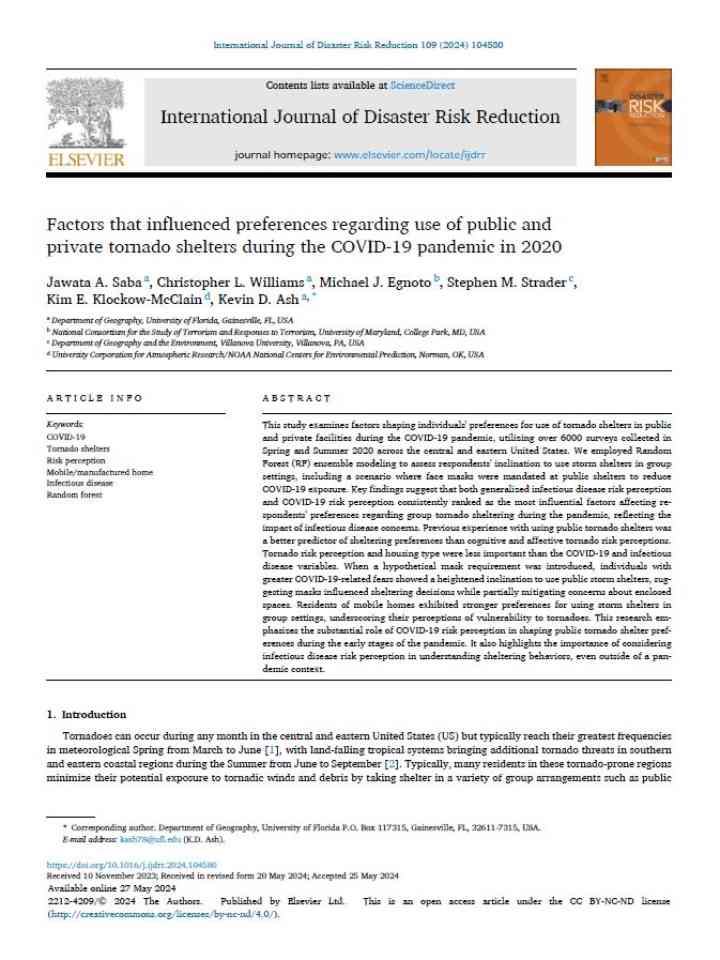Factors that influenced preferences regarding use of public and private tornado shelters during the COVID-19 pandemic in 2020
This study examines factors shaping individuals' preferences for use of tornado shelters in public and private facilities during the COVID-19 pandemic, utilizing over 6000 surveys collected in Spring and Summer 2020 across the central and eastern United States. Key findings suggest that both generalized infectious disease risk perception and COVID-19 risk perception consistently ranked as the most influential factors affecting respondents' preferences regarding group tornado sheltering during the pandemic, reflecting the impact of infectious disease concerns. Previous experience with using public tornado shelters was a better predictor of sheltering preferences than cognitive and affective tornado risk perceptions. Tornado risk perception and housing type were less important than the COVID-19 and infectious disease variables.
When a hypothetical mask requirement was introduced, individuals with greater COVID-19-related fears showed a heightened inclination to use public storm shelters, suggesting masks influenced sheltering decisions while partially mitigating concerns about enclosed spaces. Residents of mobile homes exhibited stronger preferences for using storm shelters in group settings, underscoring their perceptions of vulnerability to tornadoes. This research emphasizes the substantial role of COVID-19 risk perception in shaping public tornado shelter preferences during the early stages of the pandemic. It also highlights the importance of considering infectious disease risk perception in understanding sheltering behaviors, even outside of a pandemic context.
Explore further
